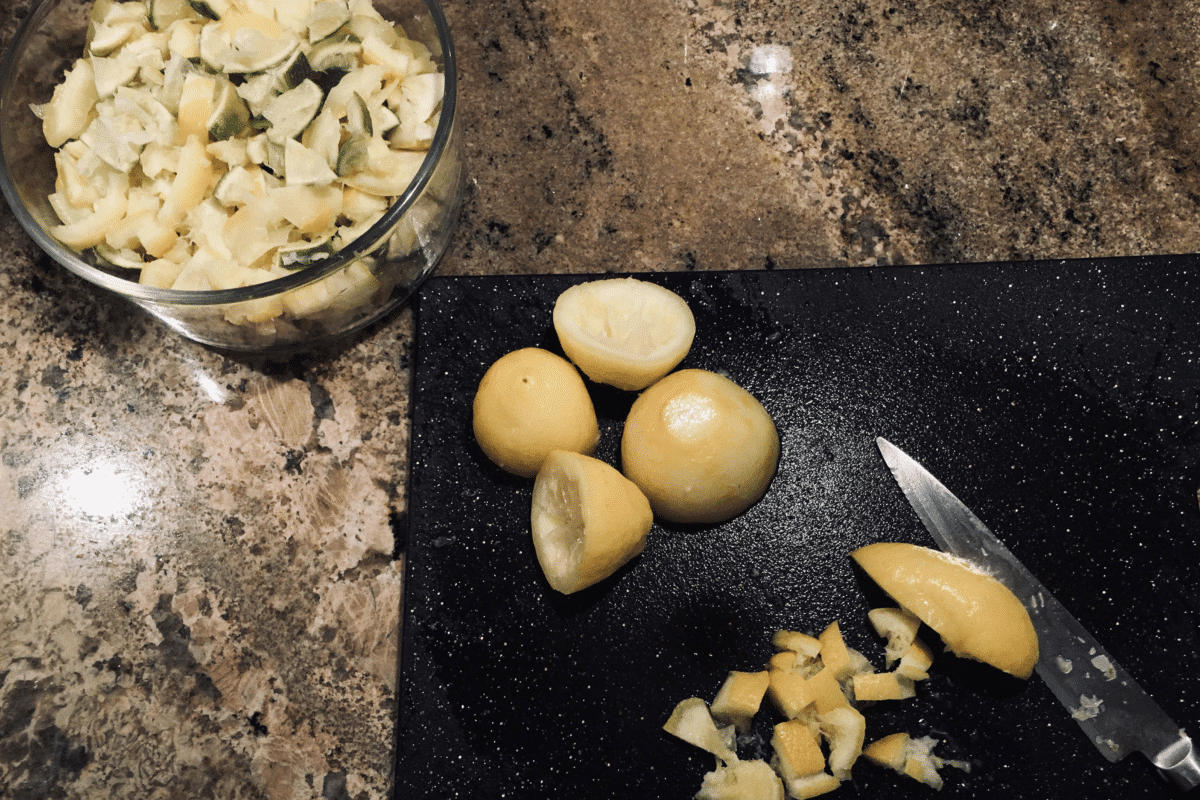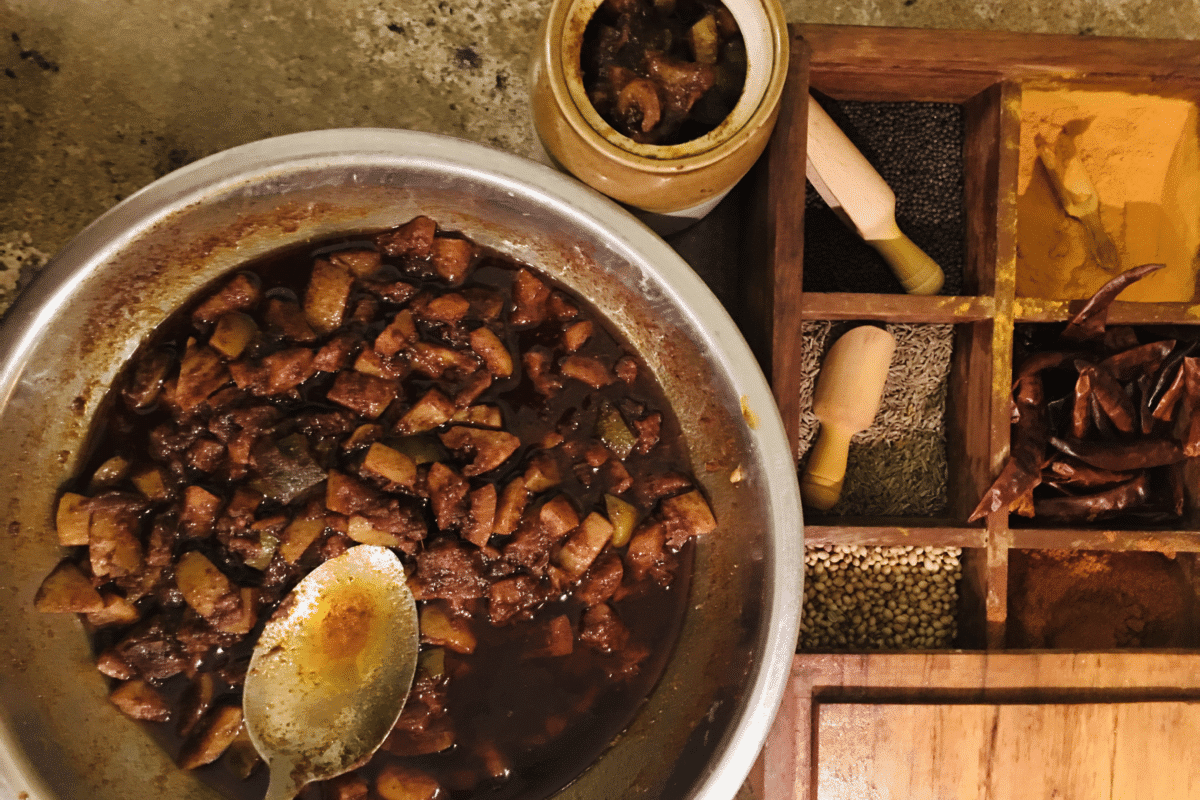Summertime often means an immoderate consumption of citrus fruits, particularly lemon and lime. They find their way into refreshing drinks such as lemonade and cocktails, on grilled dishes and salad dressings. But invariably citrus rinds end up in the compost bin or down the garbage disposal. Of course, there are lots of DIY cleaning products out there made from leftover lemons, but in this age of scrap and little to no waste cooking, out of consideration for the environment and costs, I have been searching for a better and hopefully tastier way to recycle this very fragrant part of the lemon and lime. I realized that I was throwing out an insane quantity of zests; i.e. precious essential oil! Could I make Indian style lemon and lime pickles with the leftover rinds? The quick answer is yes.

Over the years I have enjoyed plenty of delicious homemade lemon/lime pickles and satisfactory store-bought ones. Indian pickles are a staple of my bi-cultural kitchen. They are certainly a sine qua non condiment on the Indian table comparable to chili oil in Chinese restaurants, mustard in French brasseries or ketchup in American dinners. Pickling as a way to preserve food is well documented throughout history. In fact, food historians trace the origin of pickling to the ancient and sophisticated Indus Valley Civilization. The Indian sub-continent has been perfecting the art of pickling for millennia.

Hundreds of vegetables, fruits and even seeds can be pickled, as Usha R Prabakaran demonstrates in Usha’s Pickle Digest: The Perfect Recipe Book. Originally self-published, the book has become a cult phenomenon, and the authoritative reference on Indian pickles. It sums up years of research and experimentation. The Chennai based author narrowed it down to 1000 recipes in a no-frills, low-production cookbook. It looks more like a collage of old-fashioned home cooks recipe cards
than the popular high definition personality-based/lifestyle cookbooks of today. Although the book exclusively focuses on one single condiment, the overwhelming amount of variations is a reflection of the richness and complexity of the Indian culinary repertoire. It is no doubt a reminder of the fascinating cultural diversity of India, home to more than 1500 mother-tongues!

Salt and vinegar are common pickling ingredients worldwide. Oil is also a common pickling agent for Indian pickles. My recipe combines salt and oil. Since this recipe calls for mostly lemon rinds as opposed to whole lemons, the process of osmosis (removing water from the fruit with salt) is not as crucial. Therefore, the fairly high quantity of salt usually needed to make lemon pickles has been purposefully lowered and can be further reduced for those who are watching their salt intake. It is important though to use salt for these Indian pickles, as salt softens (breaks down) the rind.

Pickles, such as these lemon-lime rinds, can be enjoyed as a condiment to most Indian dishes. They can simply be eaten with steamed rice and plain yogurt. They are also a welcomed accompaniment to most grilled dishes, Western or Asian. Less traditional but no less deliciously effective: a teaspoon or two of pickle paste (pulverize the pickle in a food processor or a grinder with water and / or oil until the desire quantity and thickness is achieved) can make a bright and spicy dressing or marinade. A dollop of the same paste can also perk up a dish of lentils or beans or a soup.![]()
